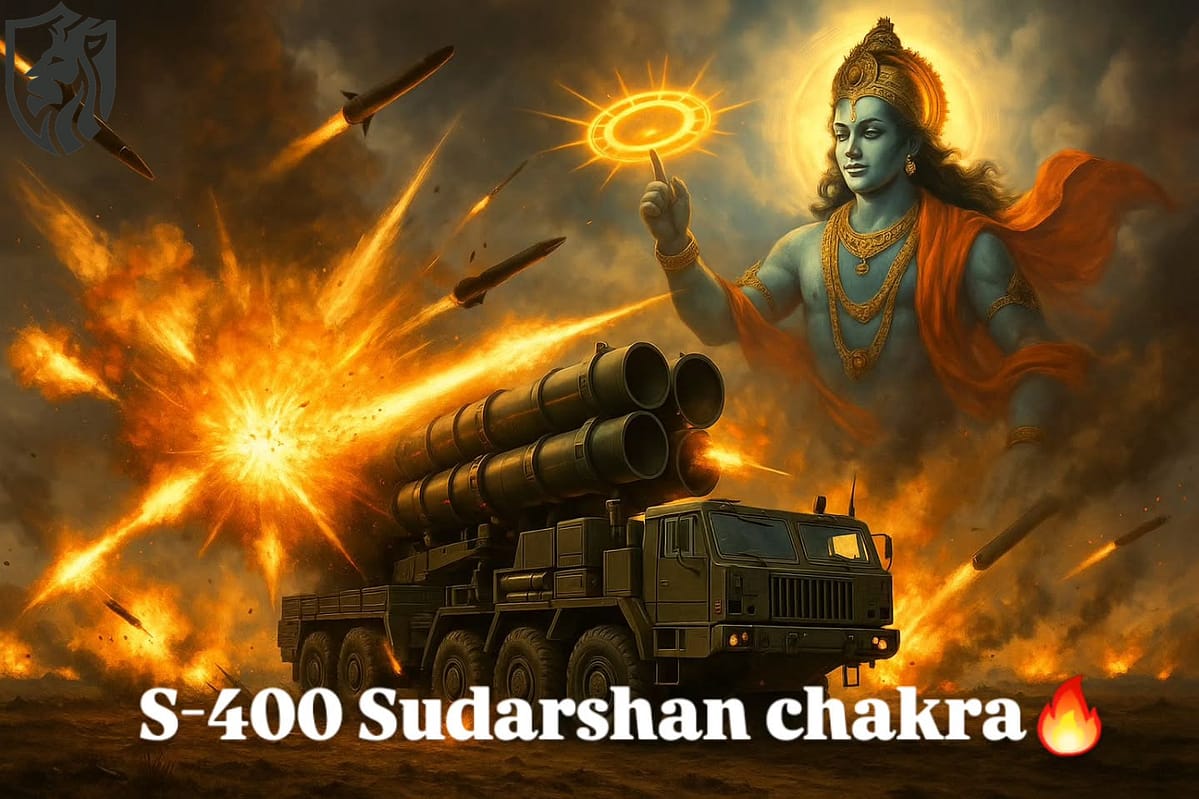
Sudarshan Chakra — India’s All-Domain Air Shield
What is Sudarshan Chakra—and why now?
India’s Sudarshan Chakra air defence system is a 10-year, national-scale project to fuse sensors, shooters, command networks, and AI into a single, layered shield. Prime Minister Narendra Modi announced the mission on 15 August 2025, describing it as a self-reliant, all-weather protective architecture for critical sites and cities.
The Chief of Defence Staff, Gen. Anil Chauhan, later described Sudarshan Chakra as both “a shield and a sword,” signalling not only interception but also rapid, precise counter-strike options by 2035.
‘Mother of all air defence systems’
At a New Delhi conference on counter-UAVs and air defence, Air Marshal Ashutosh Dixit (CISC) referred to Sudarshan Chakra as the “mother of all air defence systems combined together.” He outlined the layers of counter-drone, counter-UAV, and counter-hypersonic systems, with counter-drone at the base and deeper-reach interceptors and effectors positioned above.
Crucially, Dixit stressed an innovation race shaped by cheap drones inflicting costly losses, urging Indian industry and think tanks to stay “two steps ahead.” That demand for speed and iteration is central to planning Sudarshan Chakra’s air defence system.
From sensors to shooters: the layered design
The Sudarshan Chakra project is still in its early stages, yet the vision for it is already clear. Planners imagine a multi-domain kill chain built for speed and resilience. Expect widely distributed radars that share data in real time. Passive EO/IR sensors will watch quietly, even when emitters stay dark. RF analytics will sift noisy skies and flag suspicious patterns. Cyber and space cues will enrich one trustworthy operating picture. AI will triage tracks, prioritise threats, and match them with effectors.

It will also audit fratricide risk before giving the final engage order. Soft-kill tools will come first: GNSS spoofing, jamming, and RF takeover. Directed-energy options may blind seekers without firing a missile. Hard-kill layers will follow with guns, missiles, and hit-to-kill interceptors. Together, they should defeat swarms, cruise missiles, and difficult hypersonic threats.
Lessons from Operation Sindoor
Indian forces achieved strong results with counter-drone and GPS jamming in Operation Sindoor. Adversaries, however, adapted using AI navigation and visual guidance. Planners warn past countermeasures may not work tomorrow. Therefore, Sudarshan Chakra prioritises quick upgrades and sovereign intellectual property. Fast refresh cycles keep tactics ahead of evolving threats. Domestic IP control also secures supply chains and export options.
The 2035 horizon—and what success looks like
By 2035, the aim is to create an integrated air and missile defence network that protects strategic and civilian infrastructure—bases, rail hubs, oil facilities, and religious sites—while remaining cost-effective during prolonged crises. This requires modular open systems, hot-swap sensors, sovereign supply chains, and a doctrine that blends Air Force, Army Air Defence, Navy, DRDO, and private industry efforts.
Costs, trade-offs, and the chessboard problem
Air Marshal Dixit noted the economic reality: you cannot go bankrupt winning a war. Consequently, the Sudarshan Chakra system for air defence must maximise costs per intercepted threat. This implies the use of less expensive weapons for low-cost targets, disposable drones, and artificial intelligence that reduces unnecessary engagements. Moreover, training and wargaming must anticipate the counter-moves of adversaries—because every “surprise element” is effective only once.
Hypersonic defence: ambition and limits
Counterhypersonic defence is identified as an objective, but the current global state of the art remains challenging. India’s strategy will likely integrate wider-area sensing, faster battle management, and higher-energy interceptors, enhanced by electronic and cyber effects. The Sudarshan Chakra air defence system will require incremental trials, beginning with ballistic and cruise envelopes, before advancing to hypersonic regimes.

Industry opportunity—and risk
For Indian firms, this mission represents a once-in-a-generation industrial catalyst. Open architectures and spiral upgrades can unlock export opportunities and reduce lifecycle costs. However, the risk of integration is high; interoperability, latency budgets, and cybersecurity must be designed from the beginning rather than added later. A robust test regime that includes live-fire, SIL/HIL, and digital twins will be decisive.
What to watch next
In the near term, anticipate large-scale drone and counter-drone exercises that will benchmark tactics, sensors, and effector mixes across the various military services. Track procurement signals for layered interceptors, truck-mounted close-in systems, directed-energy pilots, and AI battle-management software. Together, these exercises and systems will reveal how the concept translates into actual order-of-battle reality by the early 2030s.
References
- https://www.ndtv.com/india-news/sudarshan-chakra-mother-of-all-air-defence-systems-combined-together-top-military-official-9331453
- https://theprint.in/defence/a-sword-a-shield-cds-gen-chauhan-explains-what-pm-modis-sudarshan-chakra-is-meant-to-be/2729380/
- https://ddnews.gov.in/en/pm-modi-announces-mission-sudarshan-chakra-to-secure-key-establishments-with-indigenous-technology/
- https://www.reuters.com/world/india/india-hold-its-biggest-drone-exercise-seeking-air-defence-boost-2025-09-23/






